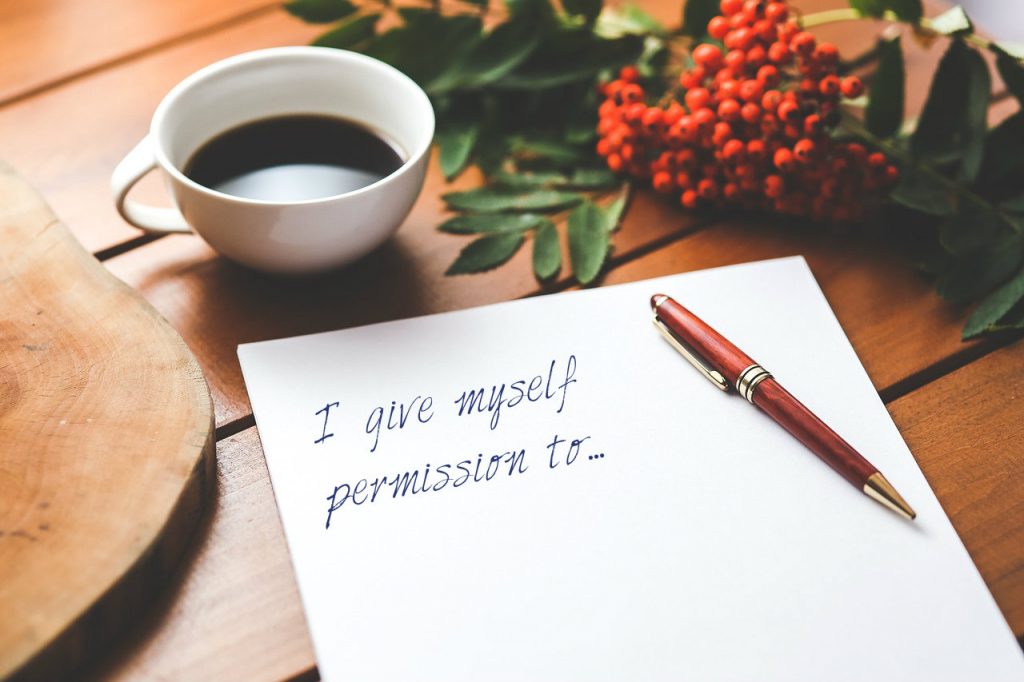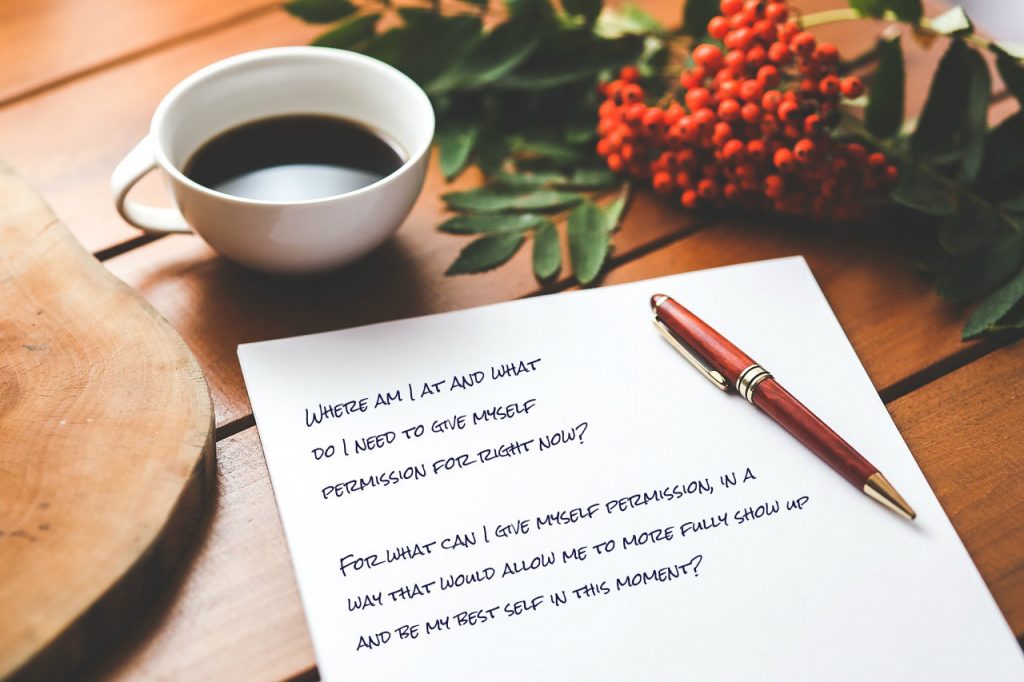Today, October 10, is World Mental Health Day…an opportunity for us all to focus on how to improve our mental health. Just as physical exercise, eating right, and proper sleep is good for our physical health, we need strategies and disciplines to improve our mental health.
Helpful mental health disciplines help mentally healthy people stay healthy, people who have mental health struggles work towards health, and people who have mental illness begin to know what they can do along with their support team to find a way to live well within whatever limitations a chronic mental illness might give them.
There is one very cool thing about mental health strategies:
Rather than adding to the burden of life, a good mental health strategy decreases the burden of life.
As a Certified Dare to Lead facilitator I read an advance copy of Brené Brown’s new book, Dare to Lead (out October 9th)…a book for those in leadership to learn practical strategies to do brave work, create a space for tough conversations, and enter the workplace fully with whole hearts.
One of the concepts she talks about are permission slips.

I love the idea, and use it often in my work.
I first discovered the power of the permission slip years ago when my oldest Junior Tribe Member was in Grade 1.
He and his little brother were adorable blonde haired kids. We let it grow longer in the winter, bowl cut style. We then then buzzed it short with a hair trimmer for the summer when they played outside so often.

In the spring, it was time to shear the children’s heads. The Junior Tribe Member I happened to catch first in the happy chaos that was our household was the littler one. I put the shaver attachment on “number 2”, ensuring a short buzz, but with enough hair left that they looked adorable. Then, I pulled the shaver attachment off to trim around the bottom at his neck and around his ears. I worked quickly, because little boys have a limited ability to sit still. Then, he’s done, he hops off the chair, and I call the older one over.
I’m in the hair shaving zone…I’m working well, in the groove. Ready to get the job done.
The older JTM hops up onto the chair for his spring buzz. I start with a strip going from the front at his hairline towards the back of his head…just off center of his head on the left side. I get about 4 or 5 inches along when I notice that he is reacting in pain, which is unusual…there is also more drag on the shaver than usual, too.
And that is when I notice I have not put the shaver attachment back on.
I’m not shaving his short, I’m shaving his hair gone.
Bald.
I stopped the moment I realized my error, but now he’s got a stripe, 2 inches wide of pink tender scalp in between the rest of his head which still had the beautiful long, fine hair of winter.
I looked with horror at what I’d done.
He asked for a mirror, and he felt the smooth strip of skin. And he started to cry. Hard.
I started to cry hard, too.
We were both weeping, realizing there was no way to fix this.
(In the moment of a hard time, sometimes catastrophizes. In that moment, neither of us could remember that hair grows back, all we could contemplate was the terrible now.)
After a time of sorrow for both of us, I allowed him to contemplate the best options I could think of, to make it “least worst” (there were no good options here):
- I could shave his whole head bald so that it matched and while he would look completely hairless, and then it would grow in evenly.
- I could shave the rest of his head on the number 2 attachment, so that there was one smooth strip amongst the stubble, and it would look a little odd, but we would buzz him again in a couple of weeks to make it uniform.
Bless his little 6 year old heart, he chose option 3: The comb over.
Evidently, he had seen the style at church with men covering their bald pate with the side hair and he had been impressed.
So…we put in some hair product and tested out his choice.
It actually worked pretty good, as long as he sat perfectly still.
In other words, it didn’t work.
We figured out a pretty good solution: a ball cap. When he had the hat on, and the comb over gelled into place, he looked great.
However, he wailed again when he remembered that hats were not allowed in his school in the classroom.
The next morning he headed off to school with his front pockets full:
- He had a note for his teacher. I explained the dilemma and asked for mercy. I asked for permission for him to keep his cap on during the class.
- He had several notes in his pocket that I had handwritten for him. They all said the same thing. Something like:
You might be tempted to make fun of me because of my hair today. However, it was my mom that is responsible, and so if you are going to make fun of anybody, it should be her. Her name is Carolyn and her number is xxx-xxxx. She would be happy to take your call.
He skipped off the bus the next day.
I was not expecting that.
I asked him what happened. He said the after he handed the teacher the note, not only was he allowed to keep his cap on during the day, apparently the teacher had used this as a teachable moment.
She had reminded the students how sometimes things went wrong in everybody’s life. It is at those moments that understanding and compassion are needed. She let them know that day, it was their job to give it to my JTM. She invited them to practice kindness instead of judgement.
After she gave her little talk to the students, the day had been as usual in the classroom. No big deal.
And as for how it went with all the other students at recess, it seemed it was a non-issue. He had enjoyed the playground with confidence, knowing that if someone should start to tease, he could handle it because he had the permission note.
He hadn’t given out a single one of those permission slips, but, even so, they had powerfully done their job.
I can’t help but wonder if the confident tone of his stride had influenced how the other kids on the playground responded to his adorable comb over.
It would be hugely unfortunate if we left permission slips for children to be able to keep their ball cap on, or go to a doctor’s appointment, or stay in for recess.
The reason why they are good for children is the same reason why they are good for adults; men and women, mothers and business men, caregivers, professionals, and retired folk.
Permission slips create space for a person to be human.
When a person gives themselves to be human, they relax. And when a person relaxes, their performance improves.
I work to do this in all sort of situations…when I did TEDx Winnipeg, I gave myself permission to be terrified and intimidated even as I was excited.
When I joined a board recently, I gave myself permission to do more listening than contributing for the first meeting while I was getting acclimatized.
I also gave myself permission, in that meeting, to contribute periodically before I knew the complete back story and total context of every issue–as a bit of a perfectionist, that was a big one. In doing so, I was inviting myself to be brave without needing to be perfect. If I said something without knowing all the nuances, it might be an opportunity to be corrected–which I would have to work through. Being corrected doesn’t mean I am stupid, it means I’m just getting up to speed. What actually happened, was that a couple of times when I offered a thought, because it was a fresh one from the outside, it had people stop and think, and generated some great discussion.
Sometimes, I give myself permission to feel tired or distracted, even while I’m about to work hard to do something important. It feels right not to have to pretend to be something I’m not. It doesn’t mean I allow the fatigue to hi-jack me. I just allow it to be present, while I go about my business. That permission often is a relief…the tired part of me can stop demanding attention, and just be.
Other times, people might give themselves permission to:
- share a personal struggle with a project during the meeting
- think about something without feeling pressure to respond right away
- not have to insist on being right all the time
- be candid about some concerns they have about a project even though the thoughts aren’t as clear as they would like
- take a deep breath and deeply listen to the other’s concerns with no need to take it personally
Almost always, I give myself permission to feel fear even when I’m being brave; to make mistakes even as I’m pursuing excellence; and permission to just be myself, even though I’ve never been, what I would consider, the cool kid.
When a team has members that can give themselves permission to ask for what they need, to feel what they are going to feel, to let themselves do what they need to do, the team will have a stronger outcome.
There’s something about writing one’s own permission slips out. Just thinking it is good, but even better is watching your hand jot it down in ink on the paper.
Seeing it written down somehow makes it real.
Permission slips are a strategy to be present with oneself. A person can only write themselves a permission slip once they know what they need. That often requires a deep breath and a mental check in with oneself:
Where am I at and what do I need to give myself permission for right now? For what can I give myself permission in a way that would allow me to more fully show up and be my best self in this moment?

Go ahead…give it a shot. Please?
Scribble a permission on the bottom of your date book. Grab a post it note and jot a permission slip, and tuck it into your pocket. Grab your phone and tap a permission note in the notes app.
Try it, and notice what happens in you when that happens.
See if it changes how you go about your day.
And notice the impact on your mental health.






4 Comments
This is very good.
I know there are things I need to do but look at everything and get overwhelmed, then nothing gets done. I need to make a permission slip to help myself not to procrastinate, but organize my time where shorter time slots doing things, get done.
Exactly. And perhaps it’s important to give yourself permission to feel the feelings that hold you back while getting things done…and still give yourself permission to do just the very next right thing
I love this read! I am going to give it some serious thought & start writing some permission slips for myself
Cool! Glad to hear you’ll give it a shot!
Write a Comment
Categories